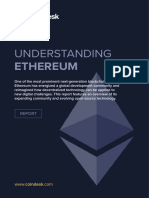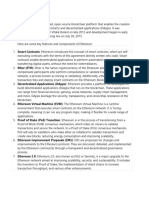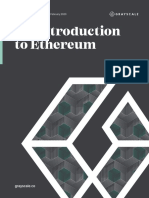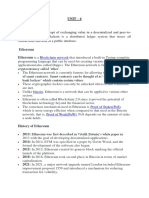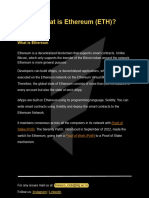0% found this document useful (0 votes)
17 views1 pageEthtrash
Ethereum is a decentralized blockchain platform that enables smart contracts and decentralized applications, significantly impacting decentralized finance and non-fungible tokens. Launched in 2015, it has faced challenges like scalability and high transaction fees, prompting upgrades to improve efficiency and sustainability. The platform's ongoing evolution and influence are expected to shape the future of decentralized computing across various industries.
Uploaded by
clean033025Copyright
© © All Rights Reserved
We take content rights seriously. If you suspect this is your content, claim it here.
Available Formats
Download as TXT, PDF, TXT or read online on Scribd
0% found this document useful (0 votes)
17 views1 pageEthtrash
Ethereum is a decentralized blockchain platform that enables smart contracts and decentralized applications, significantly impacting decentralized finance and non-fungible tokens. Launched in 2015, it has faced challenges like scalability and high transaction fees, prompting upgrades to improve efficiency and sustainability. The platform's ongoing evolution and influence are expected to shape the future of decentralized computing across various industries.
Uploaded by
clean033025Copyright
© © All Rights Reserved
We take content rights seriously. If you suspect this is your content, claim it here.
Available Formats
Download as TXT, PDF, TXT or read online on Scribd
/ 1








